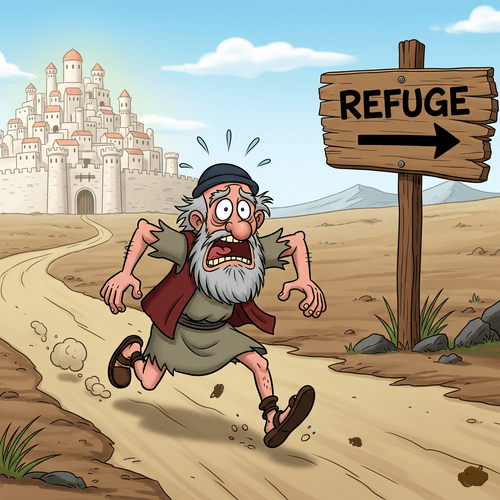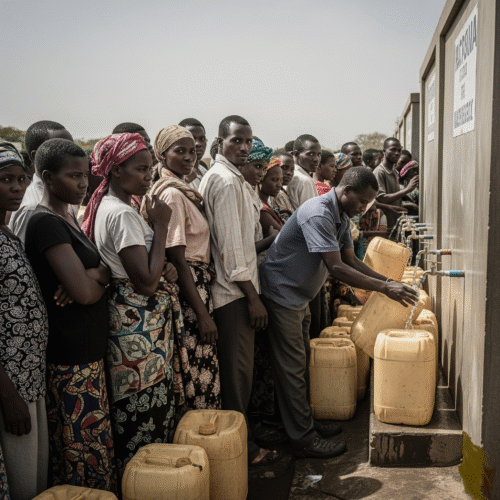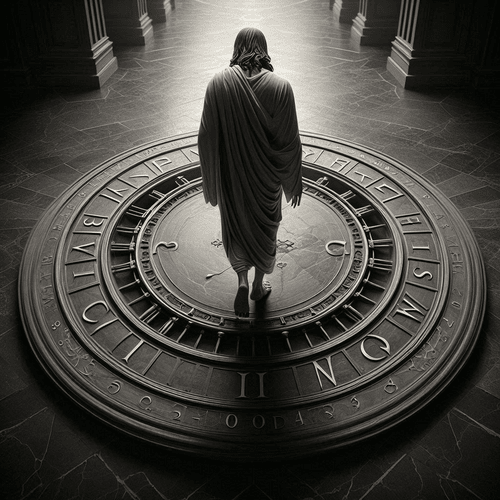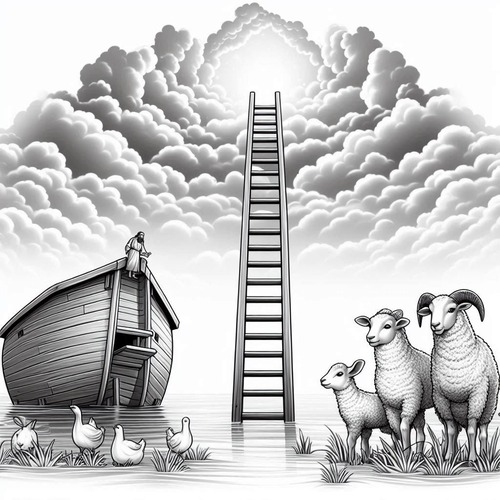Cities of Refuge: Foreshadows of Our Safe Haven in Jesus
Picture this: A man is chopping wood with his neighbour when the axe head flies off the handle, striking and killing his friend instantly. In ancient Israel, the tragedy would set in motion a chain of events that could end with the woodcutter’s own death—unless he could reach one of six special cities scattered throughout the land. These were the Cities of Refuge established by divine command in Numbers 35.
These cities reveal something profound about the character of God and the nature of true justice. They also serve as a powerful foreshadowing of our ultimate safe haven we find in Jesus Christ.
THE DIVINE DESIGN: UNDERSTANDING CITIES OF REFUGE
God didn’t leave the establishment of these cities to human wisdom. He specifically commanded Moses: “Tell the Israelites to designate the cities of refuge, as I instructed you through Moses, so that anyone who kills a person accidentally and unintentionally may flee there and find protection from the avenger of blood” (Joshua 20:1-3).
Six cities were strategically placed throughout Israel—three on each side of the Jordan River—ensuring no one would be more than a day’s journey from safety (Joshua 20:7-8). But these weren’t sanctuaries for just anyone. They were specifically designed for those guilty of unintentional manslaughter, not premeditated murder. The law carefully distinguished between accidental killing and deliberate violence (Numbers 35:16-28).
The process was both urgent and orderly. The moment someone accidentally caused a death, they had to flee immediately to the nearest city of refuge. At the city gate, the elders would hear their case and determine whether they qualified for protection. If accepted, they’d find immediate safety from the “avenger of blood”—the victim’s family member who had the legal right to exact justice.
But here’s the catch: they had to remain within the city boundaries. Stepping outside meant forfeiting their protection and facing certain death. Their freedom would only come when the current high priest died—sometimes decades later (Numbers 35:25-28).
STRIKING PARALLELS: HOW THESE CITIES POINT TO CHRIST
When we examine these cities through the lens of the New Testament, remarkable parallels emerge that illuminate the gospel message.
- Divine Appointment: Just as God ordained these cities as places of refuge, He appointed Jesus as our refuge from sin’s consequences. Isaiah prophesied, “See, I lay a stone in Zion, a tested stone, a precious cornerstone for a sure foundation” (Isaiah 28:16). Christ didn’t become our refuge by accident—He was chosen by God before the foundation of the world.
- Universal Access: The cities were open to “any Israelite or any foreigner residing among them” who killed someone accidentally (Joshua 20:9). Similarly, Jesus declared, “Whoever comes to me I will never drive away” (John 6:37). The gospel invitation extends to all people, regardless of background, ethnicity, or social status.
- Immediate Protection: The moment someone entered a city of refuge, they were safe. No waiting period, no probation—instant protection. Jesus promises the same: “Whoever hears my word and believes him who sent me has eternal life and will not be judged but has crossed over from death to life” (John 5:24). Salvation is immediate upon faith.
- Shield from the Avenger: These cities protected fugitives from those who sought their blood. In our case, we needed protection from God’s holy wrath against sin. Paul triumphantly declares, “Therefore, there is now no condemnation for those who are in Christ Jesus” (Romans 8:1). Christ stands between us and the judgment we deserve.
- The Necessity of Remaining: Leaving the city meant death. Jesus uses similar language: “Remain in me, as I also remain in you. No branch can bear fruit by itself; it must remain in the vine” (John 15:4). Our safety depends on staying connected to Christ through faith.
- Clear Access Roads: Ancient tradition tells us that roads to cities of refuge were well-maintained and clearly marked, with signs pointing the way. Jesus declared, “I am the way and the truth and the life. No one comes to the Father except through me” (John 14:6). The path to God through Christ is clearly marked in Scripture.
THE SUPERIOR REFUGE: HOW CHRIST EXCEEDS THE TYPE
As beautiful as these parallels are, they only highlight how much greater our refuge in Christ truly is.
Permanent vs Temporary Freedom: In the Old Testament system, fugitives gained permanent freedom only when the high priest died—an event they had to wait for, sometimes for decades. But our High Priest, Jesus Christ, already died for us. His death secured our permanent freedom from sin’s penalty. Unlike the Levitical priests who died and were replaced, “Jesus lives forever, he has a permanent priesthood. Therefore he is able to save completely those who come to God through him” (Hebrews 7:24-25).
Spiritual vs Physical Protection: The cities of refuge only protected from physical death. Christ offers something infinitely greater—deliverance from spiritual death and eternal separation from God. “For the wages of sin is death, but the gift of God is eternal life in Christ Jesus our Lord” (Romans 6:23).
True vs Ceremonial Cleansing: The Old Testament system provided temporary reprieve but no actual cleansing from guilt. The blood of bulls and goats could never truly take away sins (Hebrews 10:4). But Christ’s sacrifice accomplished what animal sacrifices could only symbolize: “The blood of Jesus, his Son, purifies us from all sin” (1 John 1:7).
Universal vs Limited Access: The cities of refuge were geographically limited to Israel’s borders. But Christ’s refuge extends to every nation and every generation. His final command was to “go and make disciples of all nations” (Matthew 28:19).
Unconditional vs Conditional Security: Old Testament refugees could lose their protection by leaving the city. But Jesus promises, “I give them eternal life, and they shall never perish; no one will snatch them out of my hand” (John 10:28). Our security in Christ doesn’t depend on our ability to stay within certain boundaries—it rests on His finished work.
LIVING IN OUR ULTIMATE REFUGE
Understanding this beautiful Old Testament picture should transform how we live as Christians.
- It reminds us of our desperate need for refuge. We’re all guilty—if not of murder, then of spiritual rebellion against our holy God. “All have sinned and fall short of the glory of God” (Romans 3:23). Like those ancient fugitives, we face a pursuing avenger, but ours is divine justice itself.
- It emphasises the urgency of fleeing to Christ. The accidental killer couldn’t afford to delay his flight to the city of refuge. Paul echoes this urgency: “I tell you, now is the time of God’s favour, now is the day of salvation” (2 Corinthians 6:2).
- It calls us to remain in Christ daily. Just as the refugees had to stay within the city boundaries, we must abide in Christ through prayer, Scripture, and obedience. “If we walk in the light, as he is in the light, we have fellowship with one another, and the blood of Jesus, his Son, purifies us from all sin” (1 John 1:7).
- It compels us to point other fugitives to safety. If we’ve found refuge in Christ, how can we not share this good news with others who are still running for their lives?
CITIES OF REFUGE: FORESHADOWS OF JESUS, OUR ETERNAL SECURITY
The cities of refuge were a beautiful provision, but they were always meant to point beyond themselves to something greater. In Christ, we find not just temporary safety but eternal security. We don’t wait for a high priest to die—our High Priest has already died and risen again. We’re not confined to a city’s boundaries—we have freedom to go anywhere in His service. We don’t live in fear of accidentally stepping outside our refuge—nothing can separate us from His love.
As the author of Hebrews writes, we have “fled to take hold of the hope set before us. We have this hope as an anchor for the soul, firm and secure” (Hebrews 6:18-20).
Have you fled to Christ for refuge? The pursuit is real, but so is the safety He offers. And unlike those ancient cities, this refuge is available right now, right where you are. The question is: will you run? To Him?
CITIES OF REFUGE: FORESHADOWS OF JESUS—RELATED FAQs
What do scholars say about the typological interpretation of cities of refuge? Leading Reformed theologians like John MacArthur, RC Sproul, and Sinclair Ferguson have affirmed the cities of refuge as legitimate biblical types pointing to Christ. They emphasise this interpretation isn’t merely allegorical but reflects God’s intentional design to embed gospel truths throughout the Old Testament. However, they caution against over-spiritualising details and stress typological interpretations should be guided by how the New Testament itself interprets Old Testament patterns.
- Were there specific qualifications for who could serve as judges at the city gates? Scripture doesn’t provide detailed qualifications for elders who judged cases at city gates, but they were typically mature men with established reputations for wisdom and integrity (Deuteronomy 21:19). These weren’t professional judges but community leaders who understood both the law and local circumstances. This parallels how Christ serves as our ultimate judge—not as a distant legal figure, but as one who knows us intimately and judges with perfect wisdom and compassion.
- Why were exactly six cities chosen, and does the number have symbolic significance? The six cities (three on each side of the Jordan) were primarily chosen for practical geographical distribution to ensure accessibility throughout Israel’s territory. While some commentators see symbolic meaning in the number six (representing human imperfection needing divine completion), most Reformed scholars focus on the practical mercy this arrangement demonstrated. The number emphasises God’s thorough provision for human need rather than carrying deep numerical symbolism.
What happened to refugees who died of natural causes while living in the cities? The Old Testament doesn’t explicitly address this scenario, but rabbinical tradition suggests refugees who died naturally in the cities were buried there and considered to have completed their sentence. This detail actually strengthens the typological connection to Christ—while earthly refuge had limitations even in death, our refuge in Christ extends beyond physical death into eternal life. In Christ, death becomes not an end to our refuge but a gateway to perfect safety.
- Could women and children flee to cities of refuge, or was this only for adult males? The biblical text uses inclusive language (“anyone,” “any person”) suggesting the refuge was available regardless of gender or age, though the examples given typically involve adult males in working situations. Archaeological evidence shows that cities of refuge housed entire families, not just individual fugitives. This universal accessibility prefigures how Christ’s refuge extends to all people—men, women, children—without distinction of age, gender, or social status.
- How does the requirement to stay within city boundaries relate to eternal security in Christ? This creates an interesting theological tension that highlights the superiority of our refuge in Christ. Old Testament refugees could lose their protection by leaving, which seems to parallel warnings about apostasy in the New Testament. However, Reformed theology maintains that true believers are kept by God’s power and cannot ultimately “leave” their refuge in Christ. The key difference is that in Christ, God Himself ensures we remain, whereas the Old Testament system depended on human faithfulness to stay within boundaries.
Were the cities of refuge ever actually abolished, and what does this teach us about temporary vs eternal provisions? The cities of refuge system likely ended with the Babylonian exile and was never fully restored, demonstrating the temporary nature of all Old Testament ceremonial provisions. This historical reality reinforces the typological interpretation—the shadow gave way to the substance when Christ came. Unlike these cities which could be destroyed by invading armies or abandoned through neglect, our refuge in Christ is eternal and unshakeable, secured by God’s unchanging nature rather than human institutions.
CITIES OF REFUGE: FORESHADOWS OF JESUS—OUR RELATED POSTS
Editor’s Pick
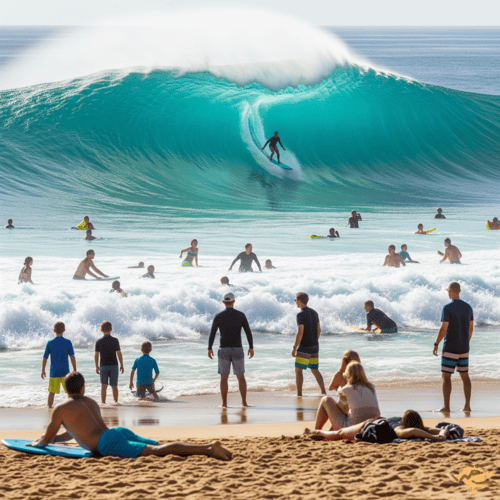
Does Ocean Salt Content Prove a Young Earth?
A COMPELLING LOOK AT MARINE CHEMISTRY AND EARTH’S TIMELINE The Salt Question That Challenges Deep Time: If Earth’s oceans have [...]
Noah’s Flood: Where Did All the Water Come From? And Go?
The question hits every Bible-believing Christian at some point: “If Noah’s flood covered the whole earth, where did all that [...]

No Marriage in Heaven? What Does Mark 12:25 Mean?
“Will I see my spouse in heaven? Will we still be married?” These questions pierce the heart of every Christian [...]
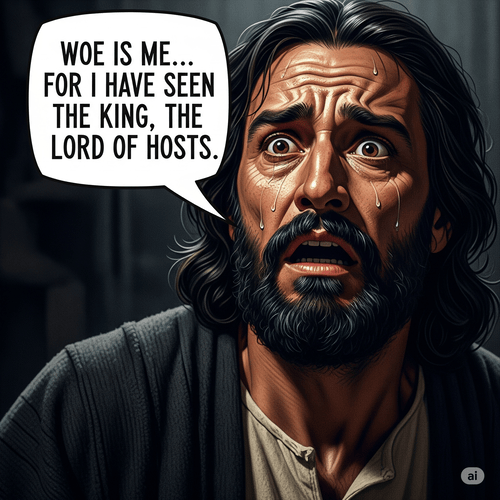
The Terror of Meeting God: What Isaiah 6 Reveals About Divine Holiness
WHEN ‘WOE IS ME’ IS THE ONLY PROPER RESPONSE TO A GLIMPSE OF GOD Picture this: You’re a prophet of [...]
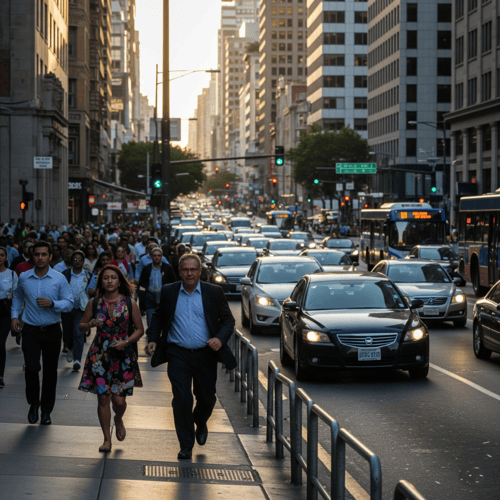
Is the Holy Spirit Present in Unbelievers? The Biblical Answer
Can someone who doesn’t believe in Jesus Christ have the Holy Spirit living inside them? This question strikes at the [...]

The Gap Theory Exposed: Why Embrace a Young Earth?
The Gap Theory proposes there’s a vast time gap—millions or billions of years—between Genesis 1:1 (“In the beginning God created [...]

Rethinking Sickle Cell Anaemia: A Case for Intelligent Design
Sickle cell anaemia presents what many consider evolution’s strongest card—a genetic condition that causes suffering yet provides protection against malaria. [...]
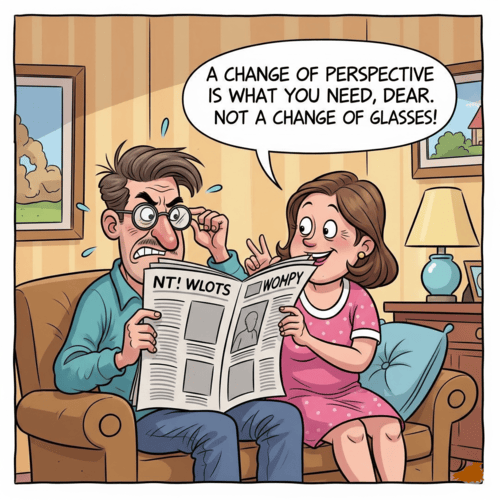
‘Bad’ Design: Flaw in Nature Or Flaw in Our Perspective?
When the Eiffel Tower was first proposed, critics called it a monstrous eyesore that would ruin Paris forever. Today, it’s [...]
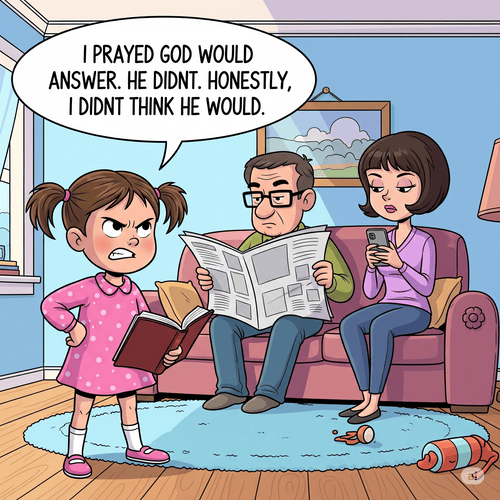
The Problem of Divine Absence: How Do Believers Cope?
WHEN GOD SEEMS FAR: THE GREAT DISCONNECT Ever wondered why God seemed so close to Joseph in his Egyptian prison, [...]
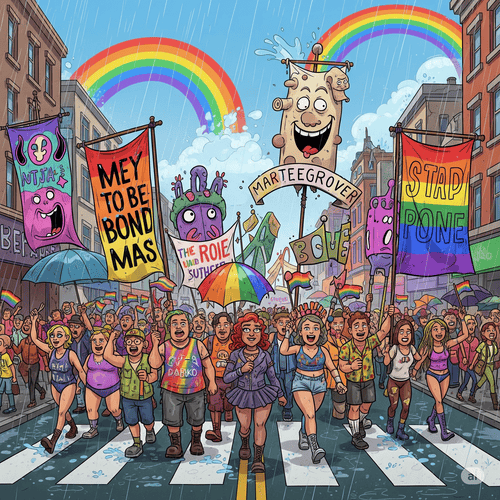
Is ‘Gay Christian’ a Biblically Acceptable Identity to Have?
THE QUESTION OF IDENTITY IN BIBLICAL PERSPECTIVE The term “gay Christian” has become increasingly common in contemporary religious discourse, representing [...]

